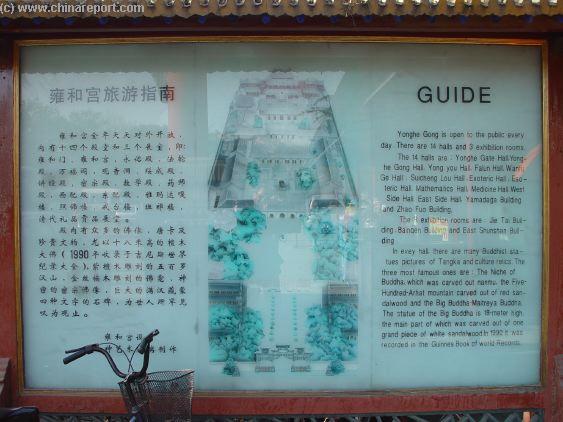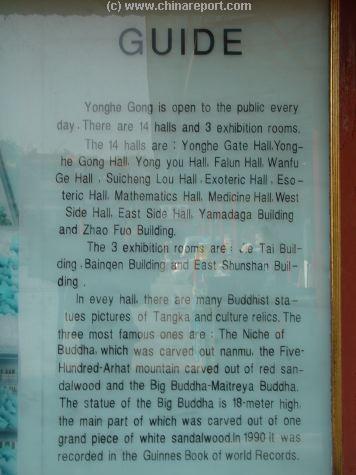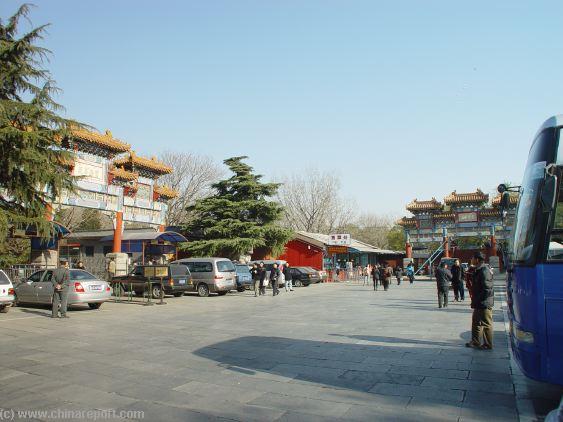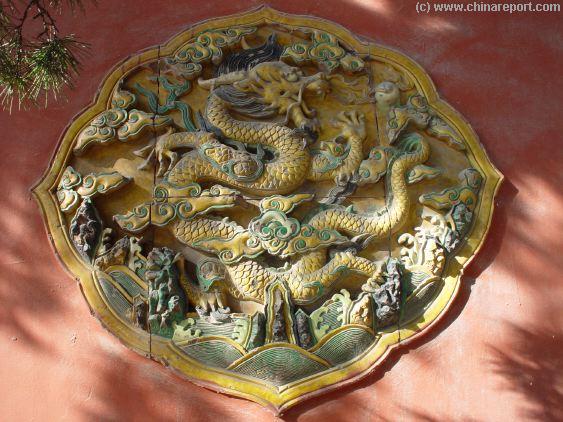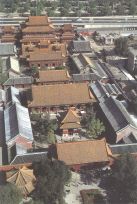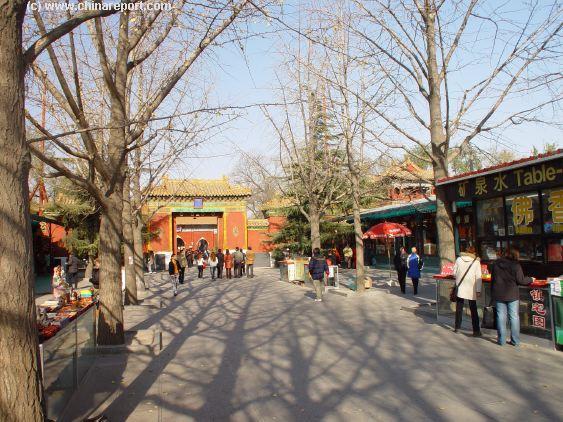History and Significance of the YongHeGong - Lama Temple in Beijing
The YongHe Gong - Lama Temple was built as the Palace of Harmony and Peace, which was originally one of the Mansions of the Imperial Family of the Ching Dynasty. It was the constructed in the year 1664 AD on direct orders of Kangxi, the Emperor.
In it's early years it was the Home of the Fourth Son of Emperor Kangxi (1661 AD - 1722 AD),Prince Yin Zheng.
Later, the fourth Son became the successor of the great Kangxi, the YongZeng Emperor (1723 AD - 1735 AD), and it was after his Reign, that his body lay in State at this Mansion. Afterwards, the building was considered part of the 'Imperial Air' or sphere and therefor it could not be reverted to ordinary use. In fact, in honor of the deceased Emperor the green rooftiles of the buildings were replaced by Golden Imperial ones, promoting the Palace to the status of official Imperial Palace.
Going with what can be regarded as a tradition, the successor and son the Qianlong Emperor (1735 AD - 1796 AD) later donated the sacred Imperial building to the Tibetan-Buddhist Clergy, turning it into Beijing's first and largest Lamasery. Overtime a whole Tibetan Village would emerge in the hutong and suburbs surrounding the Temple.
The Qianlong Emperor was devout buddhist of the Tibetan-Lamaist Type.
Lama Temple: originally Green Tiles on Buildings. Today Yellow Ceramic Tiles on Pailou Gateways and Archways as well as buildings signify the Imperial Dignity and Status of the complex.
The Qianlong Emperor was devout buddhist of the Tibetan-Lamaist Type.


